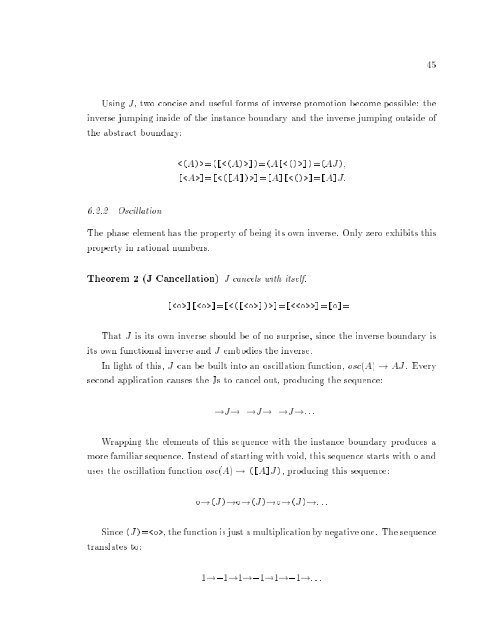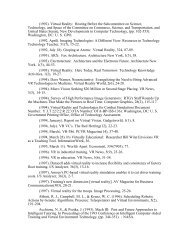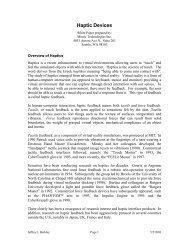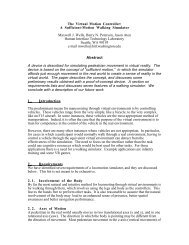A Calculus of Number Based on Spatial Forms - University of ...
A Calculus of Number Based on Spatial Forms - University of ...
A Calculus of Number Based on Spatial Forms - University of ...
Create successful ePaper yourself
Turn your PDF publications into a flip-book with our unique Google optimized e-Paper software.
45<br />
Using J, two c<strong>on</strong>cise and useful forms <str<strong>on</strong>g>of</str<strong>on</strong>g> inverse promoti<strong>on</strong> become possible: the<br />
inverse jumping inside <str<strong>on</strong>g>of</str<strong>on</strong>g> the instance boundary and the inverse jumping outside <str<strong>on</strong>g>of</str<strong>on</strong>g><br />
the abstract boundary:<br />
=([])=(A[])=(AJ);<br />
[]=[]=[A][]=[A]J:<br />
6.2.2 Oscillati<strong>on</strong><br />
The phase element has the property <str<strong>on</strong>g>of</str<strong>on</strong>g> being its own inverse. Only zero exhibits this<br />
property in rati<strong>on</strong>al numbers.<br />
Theorem 2 (J Cancellati<strong>on</strong>) Jcancels with itself.<br />
[][]=[]=[]=[]=<br />
That J is its own inverse should be <str<strong>on</strong>g>of</str<strong>on</strong>g> no surprise, since the inverse boundary is<br />
its own functi<strong>on</strong>al inverse and J embodies the inverse.<br />
In light <str<strong>on</strong>g>of</str<strong>on</strong>g> this, J can be built into an oscillati<strong>on</strong> functi<strong>on</strong>, osc(A) ! AJ. Every<br />
sec<strong>on</strong>d applicati<strong>on</strong> causes the Js to cancel out, producing the sequence:<br />
!J! !J! !J!:::<br />
Wrapping the elements <str<strong>on</strong>g>of</str<strong>on</strong>g> this sequence with the instance boundary produces a<br />
more familiar sequence. Instead <str<strong>on</strong>g>of</str<strong>on</strong>g> starting with void, this sequence starts with and<br />
uses the oscillati<strong>on</strong> functi<strong>on</strong> osc(A) ! ([A]J); producing this sequence:<br />
!(J)!!(J)!!(J)!:::<br />
Since (J)=; the functi<strong>on</strong> is just a multiplicati<strong>on</strong> by negative <strong>on</strong>e. The sequence<br />
translates to:<br />
1!,1!1!,1!1!,1!:::












